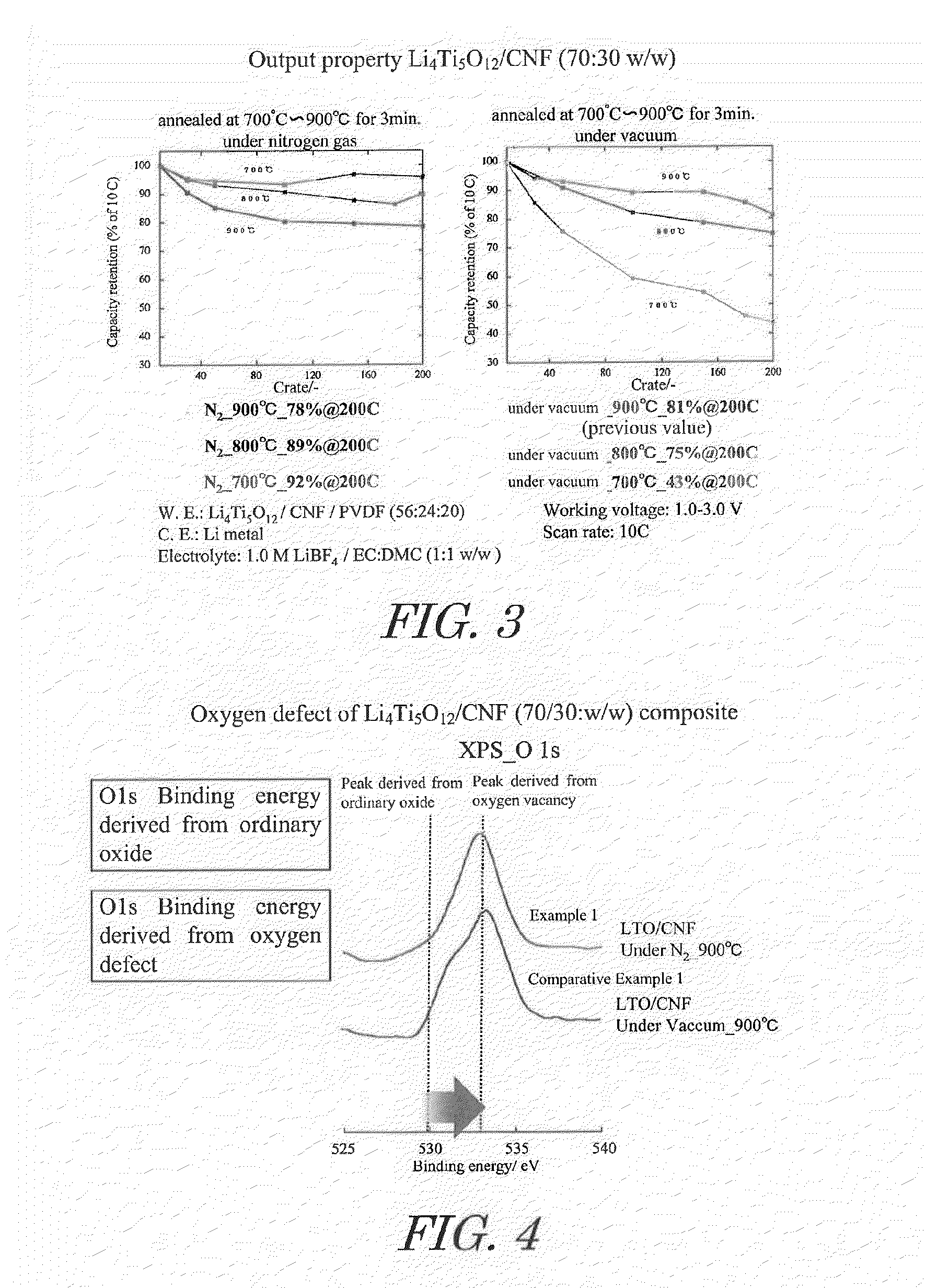Lithium titanate nanoparticles, composite of lithium titanate nanoparticles and carbon, method of production thereof, electrode material consisting of said composite, electrode, electrochemical element, and electrochemical capacitor employing said electrode material
a lithium titanate nanoparticle and carbon nanoparticle technology, which is applied in the direction of alkali titanates, sustainable manufacturing/processing, cell components, etc., can solve the problems of lithium titanate and low output properties, and achieve the effect of increasing the electric conductivity of the electrode and further improving the output properties
- Summary
- Abstract
- Description
- Claims
- Application Information
AI Technical Summary
Benefits of technology
Problems solved by technology
Method used
Image
Examples
example 1
[0059]Acetic acid and lithium acetate in amounts of 1.8 moles of acetic acid and 1 mole of lithium acetate relative to 1 mole of titanium alkoxide were dissolved in a mixture of isopropanol and water to prepare a mixed solvent. This mixed solvent together with titanium alkoxide and carbon nanofiber (CNF) were introduced into a rotary reactor, the inner tube was rotated at a centrifugal force of 66,000 N (kgms−2) for 5 minutes to form a thin film of the reactant on the inner wall of the outer tube, and sheer stress and centrifugal force were applied to the reactant to allow promotion of chemical reaction, yielding CNF on which highly dispersed lithium titanate nanoparticle precursors are supported. In this case, the amounts of titanium alkoxide and CNF dissolved in the mixed solvent were set so that the composition of the composite obtained was lithium titanate / CNF at a mass ratio (w / w) of 70 / 30.
[0060]By drying the obtained CNF supporting highly dispersed lithium titanate nanoparticl...
example 2
[0062]Heating was at 800° C., instead of under nitrogen atmosphere at 900° C. in said Example 1.
example 3
[0063]Heating was at 700° C., instead of under nitrogen atmosphere at 900° C. in said Example 1.
PUM
| Property | Measurement | Unit |
|---|---|---|
| thickness | aaaaa | aaaaa |
| centrifugal force | aaaaa | aaaaa |
| thickness | aaaaa | aaaaa |
Abstract
Description
Claims
Application Information
 Login to View More
Login to View More - R&D
- Intellectual Property
- Life Sciences
- Materials
- Tech Scout
- Unparalleled Data Quality
- Higher Quality Content
- 60% Fewer Hallucinations
Browse by: Latest US Patents, China's latest patents, Technical Efficacy Thesaurus, Application Domain, Technology Topic, Popular Technical Reports.
© 2025 PatSnap. All rights reserved.Legal|Privacy policy|Modern Slavery Act Transparency Statement|Sitemap|About US| Contact US: help@patsnap.com



